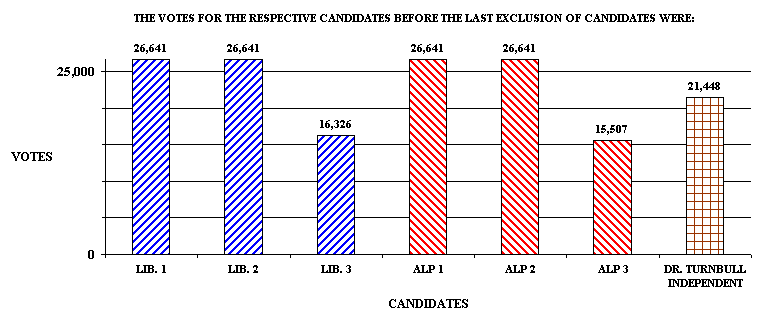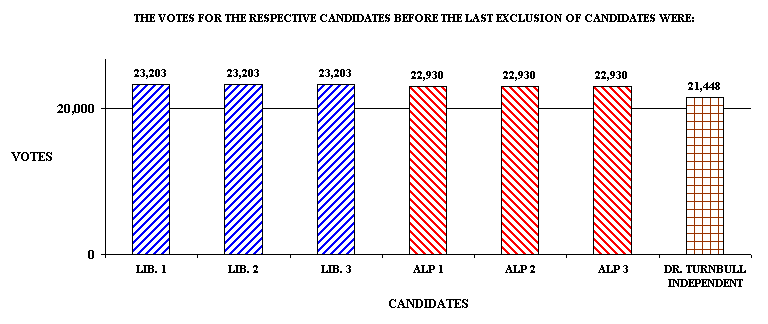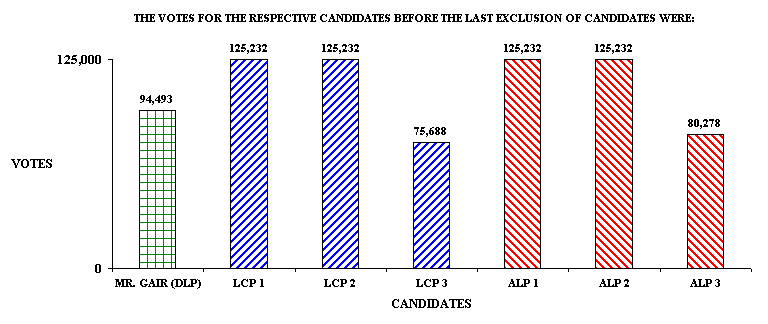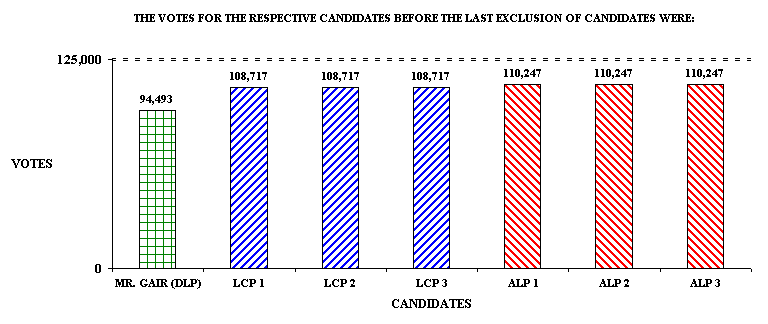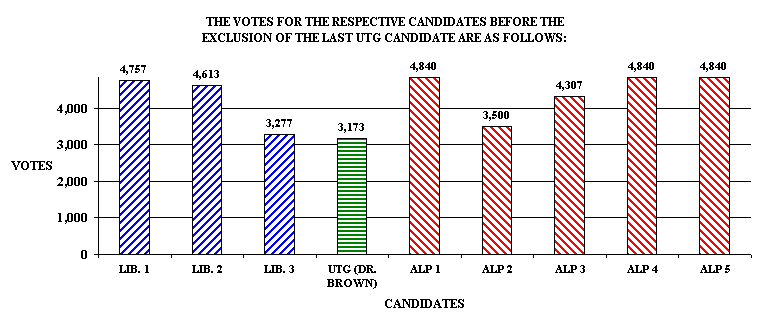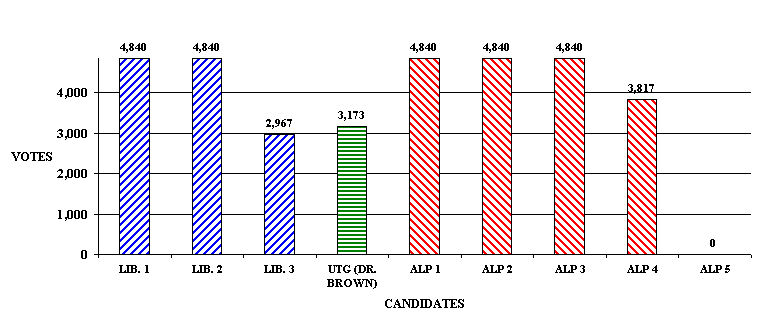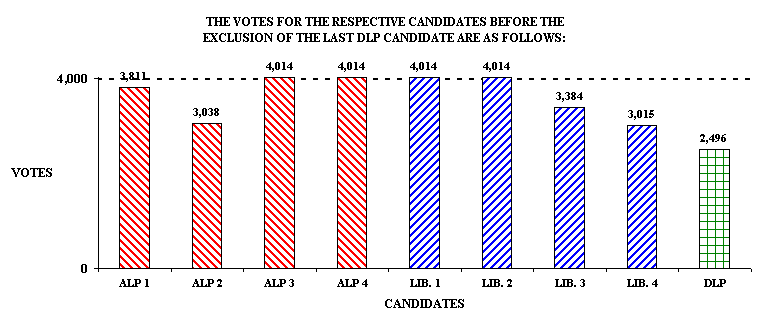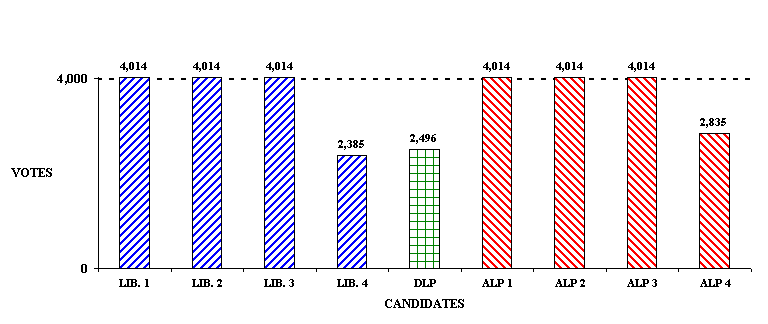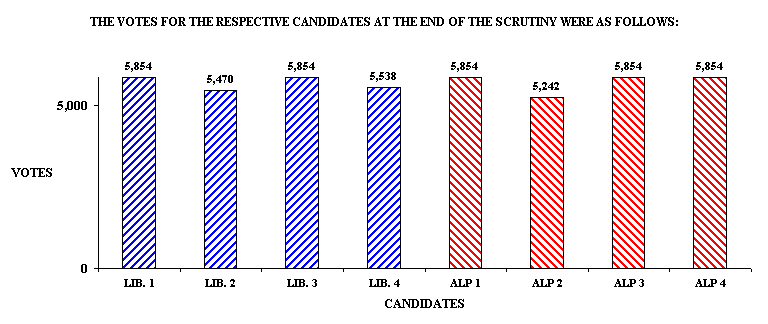| LIKE SHEEP
This potential misrepresentation becomes more serious when
combined
with the unfortunate practice by political parties of endeavouring to
regiment
their supporters into voting, in sheep-like fashion, 1-2-3 down the
paper.
Though practised universally in Mainland Senate elections, regimented
voting
has scarcely occurred in Tasmanian Hare-Clark contests.
Under Hare-Clark voting, candidates therefore owe their
election to
the support they win from the electors, not to the order in which they
are listed on the ballot-paper.
Many evils come from regimented voting, but for the moment let
us consider
how it could, in fact, change what election results otherwise might be.
The possibility of obtaining different election results from the same
election
figures arises in cases when no party (or independent candidate) has
enough
votes of its own to fill the last quota in a multi-member
electorate.
One of several such illustrations from the last Senate
election occurred
in Tasmania, where the fifth Senate seat (and 20 per cent of Tasmania's
available Senate representation) was won by a candidate who polled only
11.6 per cent of the total primary vote. In this contest, after four
seats
were filled, Mr. Devitt ( ALP) had 15,507 votes to his credit, Mr.
Orchard
(Lib.) 16,326, and Dr. Turnbull (Ind.) 21,448. As Mr. Devitt was
recorded
as having the smallest vote, he was excluded and his papers divided
between
Orchard and Turnbull according to the preferences compulsorily
indicated
on them.
Yet at the stage before Devitt's exclusion the Labor group had
a total
of 68,189 votes, the Liberals 69,608, and Turnbull 21,448. Suppose the
party totals had been divided equally between the three candidates of
each
party then each Labor candidate would have had 22,929 votes and each
Liberal
candidate 23,202. Under these conditions, Dr. Turnbull, having only
21,448
votes would have been the lowest candidate and therefore eliminated,
his
preferences deciding the fifth seat. An exact spreading of the vote
among
the major party candidates would not have been needed in order to keep
them ahead of Dr. Turnbull during the cut-up, provided the spread was
sufficient
to keep each of their candidates ahead of Turnbull's total.
STRENGTH WASTED
Under unregimented Hare-Clark voting the electors freely
distribute
both their primaries and preferences, over a wide choice of candidates.
As a result, a natural spreading of primaries and preferences generally
occurs. This also incidentally helps the major parties to retain their
electoral strength during the cut-up, as can be seen from past
Hare-Clark
elections.
|
